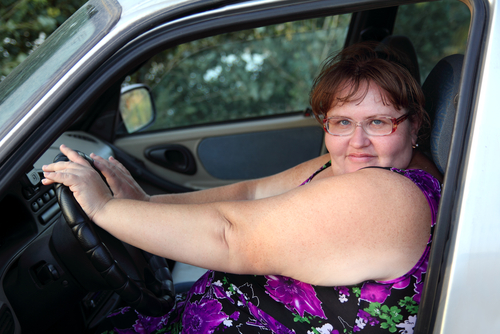Obese Cars… and Obese Drivers
Posted on Apr 15, 2018 in Safety | 2 comments

The subject of obesity is often a very sensitive one. I have a close relative who is enormous and who gets very upset if you mention diets, exercise or heart conditions.
Imagine how fat car owners feel. If they think about it, they might realize that cars have gotten very much bigger and heavier over the years, in part to accommodate them.
One study now reveals the astonishing costs of getting fat:
U.S. hospitals are ripping out wall-mounted toilets and replacing them with floor models to better support obese patients. The Federal Transit Administration wants buses to be tested for the impact of heavier riders on steering and braking. Cars are burning nearly a billion gallons of gasoline more a year than if passengers weighed what they did in 1960.
A billion gallons a year? That comes from a 2006 study on obesity and driving habits. Since then, the obesity problem has gotten much worse, now affecting over one-third of all U.S. adults, so you know it’s way more than a billion gallons.
New trains and buses are getting built with wider, heavier seats. The same is true in cars, which are getting bigger all around and a lot heavier owing, in part, to EV and hybrid batteries, safety and infotainment add-ons, and the wonderful way we have of making our cars into second homes.
The fact that drivers and passengers are getting bigger is not discussed.

There are ridiculously grand SUVs in the works, likeBentley’s EXP 9 F (right). I can’t find its weight listed anywhere, because the company knows it is totally excessive and, you know, it’s just a concept. Does all this extra weight make a better vehicle? Of course not.
One powerplant being considered is “Bentley’s new V8, augmented with an electric motor and battery pack to make the world’s largest and least efficient plug-in hybrid.” And no doubt one of the heaviest.
I wrote yesterday that the “horsepower wars are typically American, kind of like trying to pack the most calories into a Big Mac. Adding more bacon and cheese doesn’t make the meat any better.” The same is true for making big, overweight cars.
Almost any popular car you can name has grown in size and weight over the last ten years. In defense of the industry, one could argue it had to grow its cars. And many companies, including BMW and Porsche, are researching ways to accommodate their bigger passengers.
In fact, those passengers are the culprits, and they are costing all of us a bundle. We should have a tax on fat people. Imagine how that would go over. But their costs to all of us are growing as fast as they are.





.gif)


Gosh, you sure see a different industry than I see. Individual car models have been evolving larger since the beginning, even little Japanese cars, and this is a worldwide phenomenon. My new Prius is a very small car and I’m a big guy, but I fit in with no problem, and no, I don’t have to shove the seat back all the way to clear my gut. Even in a country like Japan, where citizens are fairly small, undividual models are generally getting bigger because the people are getting bigger as the younder generations get better nutrition.
The only real shift in size I can remember was after the gas crisis in 1973, when US manufacturers needed to downsize the big 60’s platforms to get better government-mandated mileage.
One of the biggest reasons for bigger, heavier cars now is new crash strength requirements and all the extra safety equipment, which is estimated to add almost 750 pounds on average to new cars.
Another reason for big vehicle evolution in the USA is rough, poor highways and so many varied requirements for vehicles, from hauling yard waste to soccer mom with kids and sports equipment, bikes, skis, etc.
Ultimately, the morbidly obese are (like those who are very small) are at either end of the bell-shaped curve, and car designers DO NOT design for those extremes. And I think if you look at the issue more carefully, you’ll see that the big gains in efficiency over the past 20 years have more than made up for larger occupants, and there’s probably a larger impact from all the extra junk people tend to haul around in their trunks than around their bellies.
Wow, look at the fat hanging off her arm